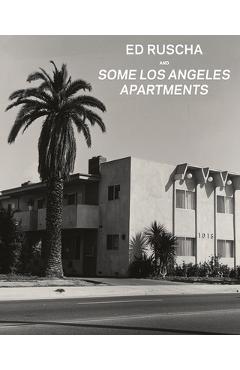Ed Ruscha and Some Los Angeles Apartments - Virginia Heckert

Detalii Ed Ruscha and Some Los
libris.ro
159.5 Lei
199.38 Lei
Photography
Virginia Heckert
Ed Ruscha and Some Los - Disponibil la libris.ro
Pe YEO găsești Ed Ruscha and Some Los de la Virginia Heckert, în categoria Photography.
Indiferent de nevoile tale, Ed Ruscha and Some Los Angeles Apartments - Virginia Heckert din categoria Photography îți poate aduce un echilibru perfect între calitate și preț, cu avantaje practice și moderne.
Preț: 159.5 Lei
Caracteristicile produsului Ed Ruscha and Some Los
- Brand: Virginia Heckert
- Categoria: Photography
- Magazin: libris.ro
- Ultima actualizare: 25-11-2024 01:40:54
Comandă Ed Ruscha and Some Los Online, Simplu și Rapid
Prin intermediul platformei YEO, poți comanda Ed Ruscha and Some Los de la libris.ro rapid și în siguranță. Bucură-te de o experiență de cumpărături online optimizată și descoperă cele mai bune oferte actualizate constant.
Descriere magazin:
Los Angeles-based contemporary artist Ed Ruscha is celebrated for his paintings, drawings, prints, and artist\'s books, receiving widespread critical acclaim for more than half a century. Capturing the quintessential Los Angeles experience with its balance of the banal and the beautiful, his photobooks of the 1960s--such as Twentysix Gasoline Stations , Every Building on the Sunset Strip , Some Los Angeles Apartments , and Thirtyfour Parking Lots --are known for their deadpan cataloguing of the city\'s functional architecture. This publication features thirty-eight Ruscha plates and an essay that traces the evolution of the artist\'s thinking about his photographs initially as the means to the end of his self-published photobooks and eventually as works of art in and of themselves. Virginia Heckert contextualizes Ruscha\'s photographs within the history of photographic documentation of vernacular architecture, using examples by such important photographers as Carleton Watkins, Eugène Atget, and Walker Evans, as well as contemporary photographers, many of whom have acknowledged Ruscha as an influence in their own depiction of the built environment.

Produse asemănătoare

Ed Ruscha and Some Los Angeles Apartments, Paperback/Virginia Heckert
![]() elefant.ro
elefant.ro
Actualizat in 27/10/2025
158.99 Lei

Back to the Drawing Board. Ed Ruscha, Art, and Design in the 1960s, Hardback/Jennifer Quick
![]() elefant.ro
elefant.ro
Actualizat in 26/10/2025
288.99 Lei
Produse marca Virginia Heckert

Ed Ruscha and Some Los Angeles Apartments - Virginia Heckert
![]() libris.ro
libris.ro
Actualizat in 25/11/2024
159.5 Lei
